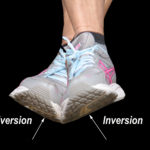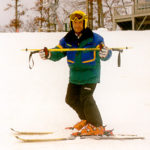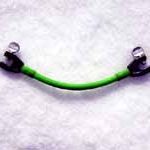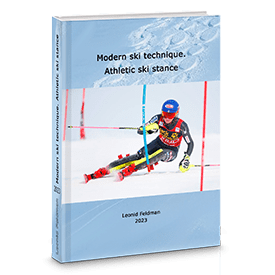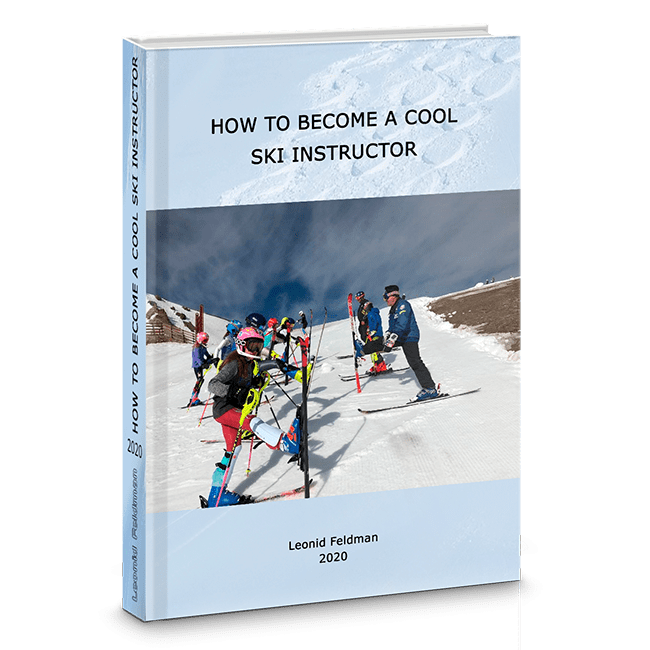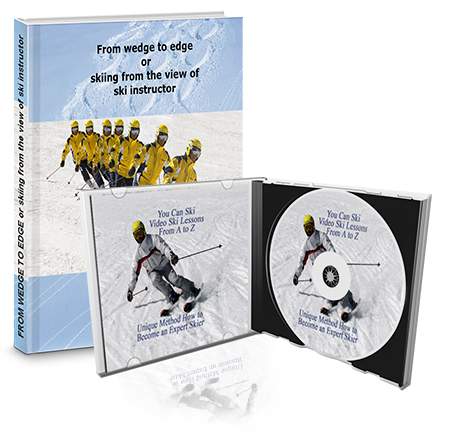Black and white pictures from the book “Skier’s Edge” by Ron Le Master
In this article I would like to focus your attention on an important issue of leg position while making a turn. Why am I taking this focus? Modern technique placing the order to change leg position because of the new ski design, that require to create same edge angle on both skis placing center of mass out of them. So what is the the difference in the legs position now and before?
Throughout a number of years, we are taught, that an essential move, while initiating the turn, is an angulation of the knees or tipping the knee of the new outside leg towards the direction of the turn. So while making the turn, the new outside ski starts an entrance into the turn by initiating an angular movement.
When looking closer at knee mechanics, this type of movement does not significantly differ from pushing ski sideways. During this maneuver, geometry and dynamic-based characteristics of the modern skis are not used. So, how would you complete the turn on modern sidecut skis without skidding?
The answer is very simple – you must shift the skis away from center of gravity, or the center of gravity away from the skis. Why am I talking about the center of gravity or the hips? Because from the right placement of the skis and the center of gravity in relation to each other, the proper edge angle can be formed, permitting skis to work as intended. Let’s try to figure out an essential important difference between the knee angulation and the displacement of the center of gravity inside the turn.
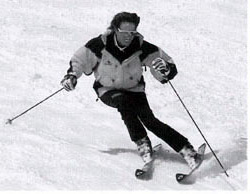
It is necessary to understand that knee angulation is a combination of pressing knee forward and rotary movements of the femur and shin that causes an inclination of the ankle. In comparison to the shift of the center of gravity, this movement is significantly different and leads to locking your stance and edge angle limit.
Centrifugal forces accumulate while making the turn, leaving the skier incapable of form a higher edge angle, because the knee is already inclined to the maximum possible position. As a result, the skier is powerless, to shift the center of gravity and simultaneously edge both skis, which results skidding of the ski tails in the second part of the arc. The greater the speed, the greater the centrifugal forces, which lead to skid. This is particularly evident on firm and ice-covered runs. Frequently, some skiers complain that skis do not hold in certain conditions. This could be true, but in most cases it is caused by restrictions of knee angulation and has no relation to the skis.
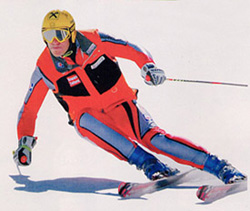
So what is necessary for the ski to carve? Starting the turn on parallel skis, try to feel how your ankles rest against the tongue of the boot. Ankles begin rolling movements that move from the big toe to the little toe on the external leg and from the little toe to the big toe on the internal leg, thus inclining skis. Legs working just like on a bicycle, moving the center of gravity (hips) away from the skis. The more the external leg is straightened and internal one is bent, the farther the center of gravity moves away from the skis, producing a more circular arc of the turn. This is a radical difference of a modern skiing technique today from what was practiced 6-8 years ago.
Also I would like to focus your attention on such an important point as the inside ski lead at the initiation of the turn. Some ski instructors are still teaching that, as a rule. It is recommended to put the internal ski forward not less than a half-boot. I have to tell that this kind of movement especially on the early stages of teaching (wedge turns) leads to creation wrong bio mechanical draw, that in a future very difficult to fix.
Let us try to analyze this movement. The skier puts the internal leg forward a half-boot so the hip of the inside leg moves forward and the center of gravity is displaced forward and inside. However, this occurs very rarely. More frequently, skiers with average balance, appear in the back seat position, as a result of exaggerated forward promotion of the inside ski. In any case, this leads to greater pressure on the internal leg at the beginning of turn.
Thus, contact of ankle with tongue of boot, meaning contact of leg and ski, is lost leading to loss of pressure on the inner ski at the turn initiation. The sensation of greater stability in the longitudinal position is true, but only in the static “closed” position. In motion, especially at the high speed, it is impossible to execute simultaneous dynamical edging of both skis from such position because edge angle of internal ski will be always less than external.
It is possible to figure out the correct movement in domestic conditions. It will be a good idea to stand in front of a mirror. Stand near some support (a wall or a table) and do the following: bend your knees (ankles and hips are parallel) in the wide stance, and even with each other. Now straighten the external leg and leave the internal (nearest to the support) in the same position. The center of gravity will be displaced left from the ankles, and feet will get the edge angle. Now try it on the other side. If all these exercises work in front of a mirror, it is visible at once how the center of gravity moves due to bending and extending of the legs, as a result of an inclination of the ankles. For the full sensations, you can repeat all this in skiing boots. Feel the speed and power of this movement! Trust me, even on a gentle slope, speed will be rather sensitive.
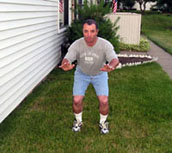
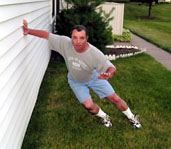
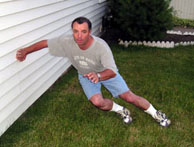
I understand completely that it is possible to learn to ski from printed materials, but it is neither easy, nor simple, no matter how good those materials must be – you cannot see yourself from the side. It is especially difficult to learn in this kind of sport like downhill skiing, where the filigree technique, feeling of the snow, and reflex decision-making are required.
When learning to make carving turns, there are certain additional difficulties. The basic problem stems from the fact that, in the majority of physical activities, our ankles and hips are in one plane, while our center of gravity is approximately on the vertical that is between our ankles. The carving turn demands from the skier to be in a completely unnatural position, where the center of gravity is displaced away from the ankles. Technically, it is difficult enough, but in my opinion the problem is also psychological.
It is not simple to get to the fact that the body and legs are moving in parallel planes. It is much easier to bend the knee inside, which seems like carving, but in reality you stand above a ski going sideways. A rather typical version of such a turn is shown in this picture.
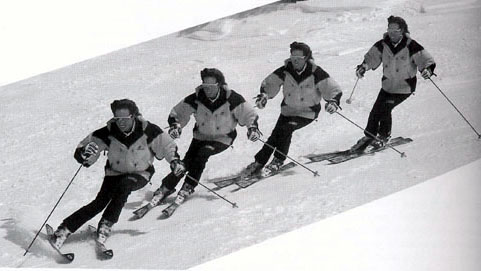
The changes of technique that have taken place during last several years are superbly visible in the picture below. The modern style of skiing is exhibited by the young Canadian athlete Julien Cousineau. In his performance, both skis are on the snow, conducted widely, allowing to achieve stable balance through the turn much easier, even when the center of gravity of the sportsman is much farther from his ankles. Longitudinal position of the skis is practically absent. Thus, the edge angle of both skis can change through a very wide range. It allows the athlete to carve out a round, completed turn, at high speeds. I am certain that the sensation of control much stronger with this turning technique than with turns of the older type.
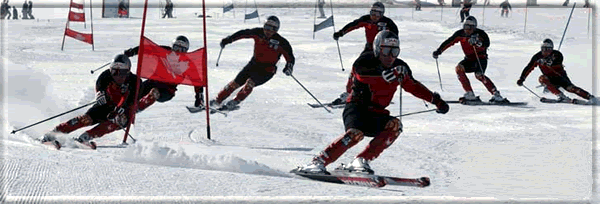
One more serious problem is speed. The statistics shows that on modern shaped skis speed is approximately 30% higher because carving turn is faster than the skidding turn. For an average skier, who spends 10-15 days per year skiing in big mountains, it is very difficult to cross through a certain high-speed barrier – to leave his zone of comfort and to exceed the speeds to which he already has gotten used to. But, that is exactly what carved turn demand including the early stages of learning.
However, I am convinced that in order to seize the technique successfully and quickly, as well as to overcome a psychological barrier, the ski instructor will become the most important person. The instructor can choose the appropriate slope, and clearly show and explain every kind of movement. A good instructor can easily point out your mistakes, help to correct them as much as possible, and most importantly install confidence in your own forces, necessary for development of the new technique of dynamic carving turns. For this reason, many skiers come back to their instructors from year to year. The instructor is your friend and assistant, and it always pleasant to deal with the people you trust.
One more important addition: At the beginning, the main task is to figure out the movement. It is best to do so on wide, relatively gentle slopes, and at rather low speeds. After sufficient practice, you will feel completely new sensations of control of your skis at newer and greater speeds. I am certain you can all do it!
Good luck!


